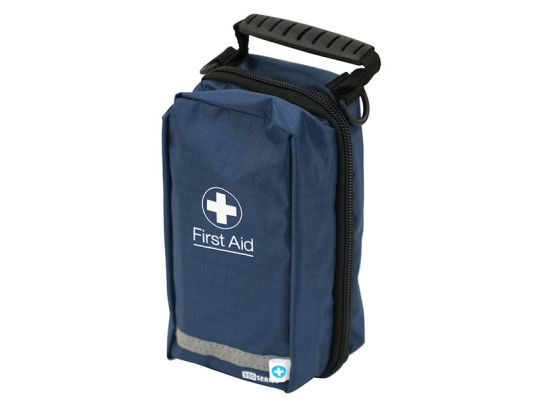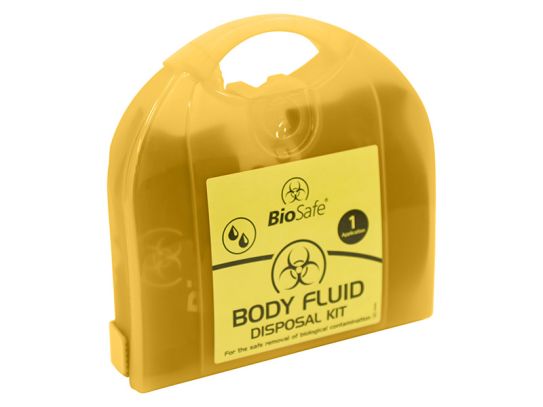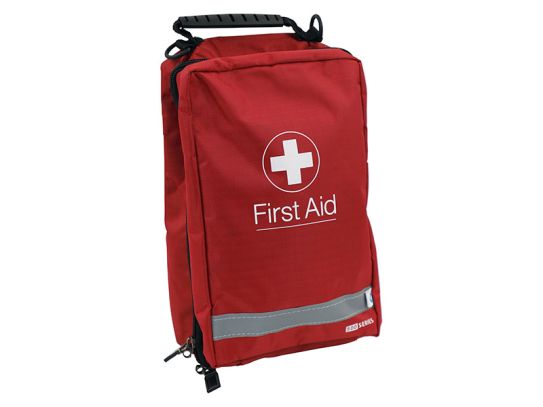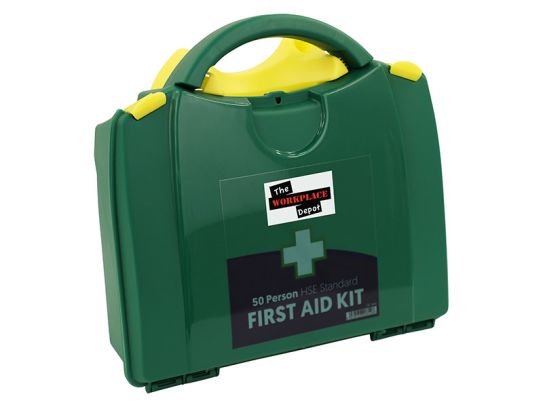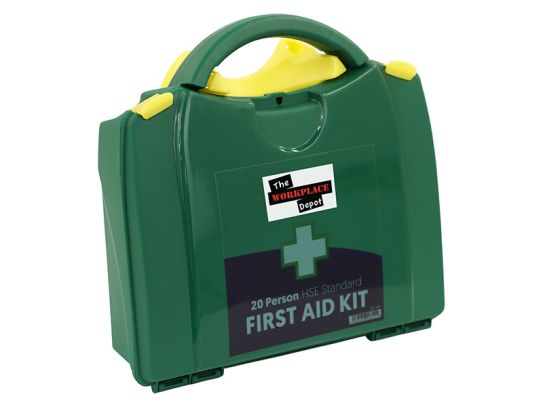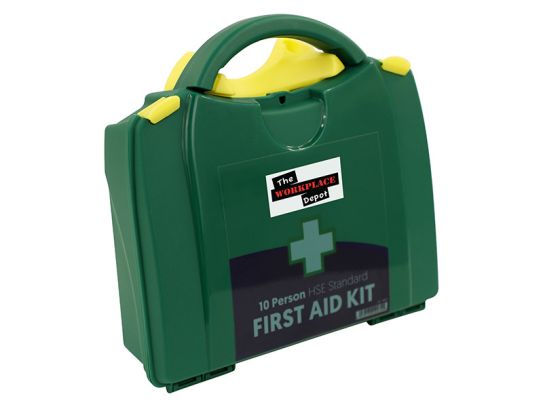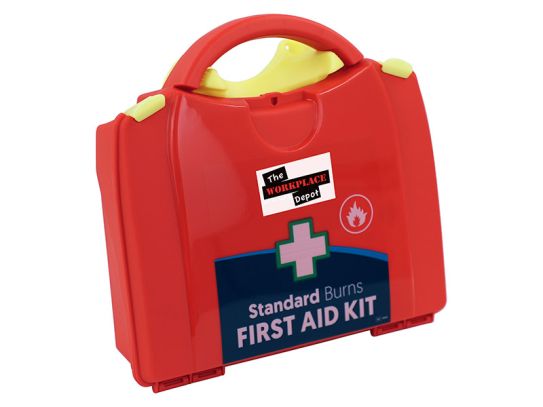First Aid Kits
First Aid Kits for Every Situation - Home, Work, and on the Go
Accidents happen, and when they do, you want to be prepared. That's where our first aid kits come in! Our collection includes everything you need to handle a variety of injuries and emergencies.
For those on the go, we have car first aid kits that are small and portable, but packed with essential supplies. Our CPR first aid kits are a must-have for anyone trained in CPR, as they have everything needed to perform the procedure.
We also have larger, more comprehensive kits designed for workplaces and personal use. These kits come in a variety of sizes and styles, including first aid bags that are easy to carry and store.
And if you're dealing with burns, our burn dressings are a must-have.
What Are First Aid Kits?
First aid kits are collections of supplies and equipment that are used to provide medical treatment in case of an injury or illness. They can be used to treat a variety of conditions, including cuts, bruises, burns, and more serious injuries. First aid kits often include items such as bandages, gauze, adhesive tape, scissors, tweezers, and over-the-counter medications such as pain relievers and allergy medicine. They may also include more specialised items such as splints, ice packs, and CPR face masks. First aid kits can be small and portable, designed to be carried with you, or they can be larger and more comprehensive, designed for use in a specific location such as a workplace or home.
What Are Some Common Uses for First Aid Kits?
There are many common uses for first aid kits, including:
- Treating minor injuries such as cuts, scrapes, and bruises
- Providing relief for pain and discomfort
- Stopping bleeding from minor cuts and wounds
- Protecting wounds from infection
- Providing support for broken bones and sprains
- Treating burns
- Administering CPR in case of cardiac arrest
- Treating allergic reactions
- Providing basic first aid in case of an emergency until more advanced medical treatment is available
First aid kits are useful to have on hand in a variety of settings, including at home, at work, while travelling, and while participating in outdoor activities. They can be used to treat minor injuries and provide basic first aid until more advanced medical treatment is available.
What Are the Different Types of First Aid Kits?
There are several different types of first aid kits, including:
- Personal first aid kits: These are small, portable kits designed to be carried with you, such as in a purse, backpack, or car. They are suitable for treating minor injuries while on the go.
- Workplace first aid kits: These kits are designed for use in a specific location, such as an office or factory, and are typically larger and more comprehensive than personal first aid kits. They may include items such as bandages, gauze, adhesive tape, scissors, tweezers, and over-the-counter medications, as well as more specialised items such as splints and CPR face masks.
- Car first aid kits: These are compact kits designed to be kept in a car in case of an emergency. They may include items such as bandages, gauze, adhesive tape, and over-the-counter medications.
- CPR first aid kits: These kits are designed for use by individuals trained in CPR and include everything needed to perform the procedure, including a CPR face mask, gloves, and a barrier device.
- First aid bags: These are larger kits that may include a variety of first aid supplies, such as bandages, gauze, adhesive tape, scissors, tweezers, and over-the-counter medications. They are designed to be easy to carry and store.
- Burn dressings: These are specialised dressings used to treat burns. They may be included in some first aid kits or available as a standalone product.
There are also first aid kits designed for specific situations, such as outdoor activities or travel, which may include additional items such as insect repellent, sunscreen, and medications for motion sickness.
What Are the Key Features to Consider When Choosing First Aid Kits?
When choosing a first aid kit, some key features to consider include:
- Size: First aid kits come in a range of sizes, from small and portable to larger and more comprehensive. Consider the size that is most suitable for your needs and the intended use of the kit.
- Contents: Look for kits that include the supplies and equipment you are most likely to need, such as bandages, gauze, adhesive tape, and over-the-counter medications. Some kits may also include more specialised items such as splints and CPR face masks.
- Quality: Choose a kit with high-quality supplies and equipment to ensure that you have the tools you need to provide effective first aid.
- Ease of use: Look for kits that are organised and clearly labelled, making it easy to find the supplies you need in an emergency.
- Shelf life: Consider the shelf life of the supplies included in the kit. Some items, such as medications, may expire over time and need to be replaced.
- Certification: Some first aid kits are certified by organisations such as the American Red Cross, which can be a good indication of the quality and reliability of the kit.
- Price: First aid kits vary in price, depending on their size and contents. Determine your budget and look for a kit that offers the best value for money.
What Should Be Included in a First Aid Kit?
A basic first aid kit should include the following supplies and equipment:
- Bandages: A variety of bandages, including adhesive bandages, gauze, and roll bandages, for covering and protecting wounds.
- Adhesive tape: Used to secure bandages in place.
- Scissors: Used to cut bandages and other materials.
- Tweezers: Used to remove splinters or other small foreign objects from the skin.
- Over-the-counter medications: Such as pain relievers, allergy medicine, and antacids.
- Cold packs: Used to reduce swelling and numb pain.
- Splints: Used to support and immobilise broken bones or sprains.
- CPR face mask: Used to assist with CPR in case of cardiac arrest.
- Gloves: Used to protect the hands and prevent the spread of infection.
In addition to these basic supplies, some first aid kits may also include more specialised items such as burn dressings, a snakebite kit, a thermometer, and a manual on first aid procedures. The specific items included in a first aid kit will depend on the intended use of the kit and the needs of the user.
How Long Do the Supplies in a First Aid Kit Last?
The shelf life of the supplies in a first aid kit will depend on the specific items included. Some items, such as medications, may expire over time and need to be replaced. It is a good idea to check the expiration dates of the supplies in your kit regularly and replace any that have expired.
Other supplies, such as bandages and adhesive tape, may not have an expiration date but can become damaged or less effective over time. It is a good idea to check the condition of these items periodically and replace them if they are no longer usable.
In general, it is a good idea to restock your first aid kit regularly to ensure that it is fully stocked and ready to use in case of an emergency. The frequency of restocking will depend on the size and contents of the kit, as well as the location and conditions in which it is used.
Can I Use a First Aid Kit If I Am Not Trained in First Aid?
First aid kits are designed to provide basic first aid and are intended for use by individuals who have some knowledge of first aid procedures. If you are not trained in first aid, it is important to seek guidance from a trained professional or follow the instructions provided in the kit.
While a first aid kit can be a useful tool in providing basic first aid, it is not a substitute for proper medical treatment. If you are dealing with a more serious injury or illness, it is important to seek immediate medical attention.
If you are not trained in first aid, it is a good idea to consider taking a first aid course to learn the necessary skills and knowledge to provide effective first aid in case of an emergency.
Are There Any UK or European Industry Standards or Regulations That Apply to First Aid Kits?
In the United Kingdom, the Health and Safety (First-Aid) Regulations 1981 require employers to provide adequate and appropriate first aid equipment, facilities, and personnel for their workplace.
The specific requirements for first aid equipment will depend on the nature of the workplace and the number of employees. The Health and Safety Executive (HSE) recommends that employers carry out a risk assessment to determine the appropriate level of first aid provision for their workplace.
There are no specific regulations governing the content or quality of first aid kits in the UK. However, first aid kits should be appropriate for the needs of the workplace and should be regularly checked and restocked as necessary.
In the European Union, the First Aid Directive (89/391/EEC) requires employers to provide first aid equipment and facilities for their employees. The specific requirements for first aid equipment will depend on the nature of the workplace and the number of employees.
There are no specific regulations governing the content or quality of first aid kits in the EU. However, the First Aid Directive requires that first aid equipment be suitable for the needs of the workplace and be checked and restocked as necessary.
